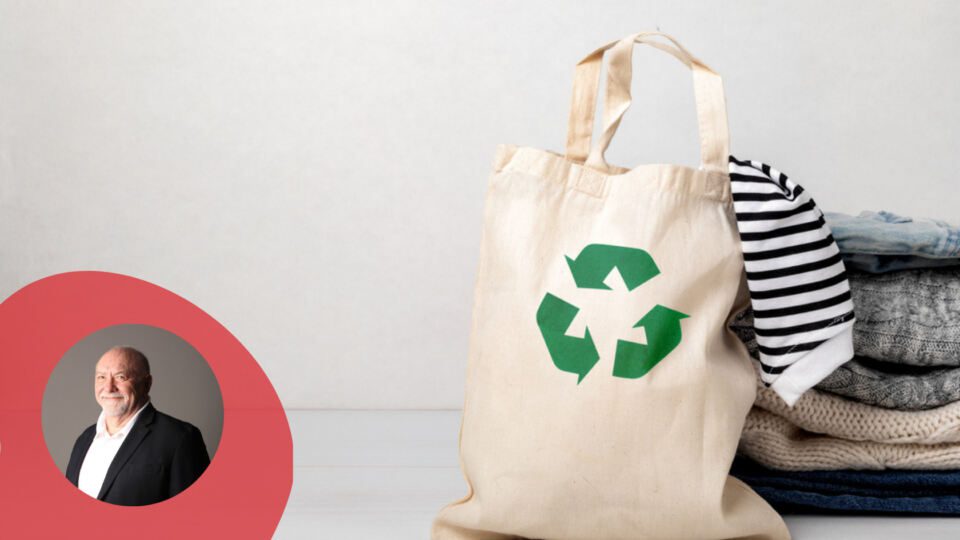For decades, there have been continued debates surrounding sustainability and the fashion industry’s position in implementing and maintaining a sustainable value chain, where renewable resources from the environment can be continually used and human rights are protected. Focus and blame generally turn to the manufacturing, production and distribution parts of the chain, but other aspects are not usually at the forefront of the mind, especially when it comes to the consumer standpoint. But the entire industry — from concept through to the consumer — must work together to improve the transparency of value chains around the world.
Start With the Supply Chain
Before the rise of cheap mass-produced apparel, clothing was typically made with higher quality materials, often by hand, and items lasted significantly longer. In recent decades, fast fashion became incredibly popular due to its cost efficiency, both for manufacturers and consumers. Awareness of the wider impact of fast fashion has now grown, and the short lifespan of the products, as well as their environmental impact, are issues that the aptly named ‘slow fashion’ movement has tried to tackle.
Consumers have become much more eco-conscious, but uptake of slow fashion practices has inevitably been sluggish, as the costs to the manufacturer (and others in the supply chain) are not insignificant when comparing the profits that fast fashion brings into the industry.
Nevertheless, the reality of solving these issues includes investment into the supply chain at an earlier stage, incorporating a more holistic view of the garment design. Taking a more sustainable approach to the whole manufacturing, shipping and selling process can mean that eco-friendly, long-lasting garments are made, where materials are sourced locally to reduce the impact on the environment.
Advertisement
An Eco-Conscious Journey
It is easy to forget how far sustainability has already come in the fashion industry. Many assume that environmental ethics are a neoteric phenomenon, but the modern environmental change movement started in the 1960s. Successes such as the continuing abolishment of child labor in some regions and the commemoration of Earth Day are testament to the growing awareness that continued activism has enabled. Yet despite such efforts, many companies continued to prioritize profits over environmental impact.
Today, with technological advancements reaching new heights, the fashion industry is aiming to phase out the use of coal and reach 100% use of electricity through solely renewable sources by 2030. In tandem with this, there is a goal to employ zero-emission vehicles when shipping apparel across various regions, with a duty to track, quantify and publicly declare emissions output. Having these contingencies in place keeps organizations within the supply chain transparent and accountable while encouraging them to make greater environmental efforts in the future.
Shifting Attitudes Across the Industry
Although slow fashion undoubtedly leads to a higher end cost for the consumer, recent research has shown that, on average, one-third of people are willing to pay more for sustainability. The study also found that 85% of consumers have moved toward being more sustainable during the past five years, demonstrating a clear shift in attitudes in recent years.
Although these findings are promising, for a large majority it is still difficult to reverse the ‘throw away’ mentality that has become so ingrained into society. To tackle this, global apparel brands must adopt a circular economy in their business models and continuously engage the public in sustainability education.
Popular brands such as Gap, H&M, Burberry, Nike and Stella McCartney are doing just that by starting the Make Fashion Circular initiative, where they work with fashion producers, designers and city officials to encourage the incorporation of more renewable materials during production and design, as well as recycling old clothes.
Elsewhere, following COP26 global industries are rethinking their sustainability plans and trying to make greater efforts to drive environmental and humanitarian change. To tackle its impact, 130 companies within the fashion sector have signed the Fashion Industry Charter for Climate Action, illustrating a large proportion of businesses that are fighting for change.
Making Sufficient Change for the Future
Every aspect of the supply chain must work in harmony if true change is to come to fruition. It is the responsibility of fashion designers to design garments that can be sustainably sourced. Raw material suppliers must gather eco-friendly materials, and textile producers should recycle material to lessen the environmental strain on the planet. Manufacturers must invest in renewable energy sources for lighting and heating to further reduce the overall carbon impact in their part of the chain. The fashion industry must also place great focus on creating sustainable fibers and launch chemical management programs.
Ultimately, what is truly needed is continued and consistent supply chain transparency. This can be achieved by combining product lifecycle management tools with impact measurement analytics, driving traceability and sustainability for fashion brands. Technological advancements are continually evolving, allowing detailed data on practices throughout the whole supply chain to be accessible by all so that environmental impact calculations can be automated, stored, and checked.
The urgent need for fashion brands to maintain accountability for how it treats the planet keeps growing. Companies such as Fortude, along with Infor as a global alliance partner, together can play a technology enabler’s role in measuring sustainability KPIs.
Under increasing pressure from consumers and regulators to introduce sustainable manufacturing practices from sketch to store, and communicate these with stakeholders and customers, the technology to deliver this transparency is completely within reach.
Robert McKee is Senior VP of Global Strategic Alliances at Fortude and heads up the sales growth in South America. With a vast knowledge and more than 20 years of experience in the global fashion industry, he is well versed in the product, industry management and strategy aspects of the fashion software industry. For more information on Fortude’s latest fashion sustainability vlog series, visit Technology and the future of sustainable fashion.




